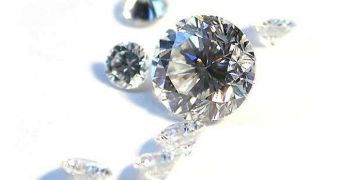It's no secret to anyone that flawless diamonds are the most expensive ones. That naturally happens because they are very rare. A large portion of all extracted diamonds have flaws, while others only small defects. Some time ago, researchers at the University of California in Santa Barbara (UCSB) have determined the quantum properties of such defects inside diamonds, in a research that now sets the foundation for using state-of-the-art computational methods in studying defects in other alternative materials, ScienceDaily reports.
One of the most promising aspects of the new techniques is that they may advance studies looking for little-known materials to be used in designing quantum computers. The diamond defect-based computer calculations could enable the development of new applications and materials for semiconductors, the materials that underlie today's electronics industry. Details of the UCSB study appear in the latest online issue of the esteemed journal Proceedings of the National Academy of Sciences (PNAS), and will also be listed in the print edition of the publication.
“Our results are likely to have an impact on experimental and theoretical research in diverse areas of science and technology, including semiconductor physics, materials science, magnetism, and quantum device engineering. Ironically, while much of semiconductor technology is devoted to eliminating the defects that interfere with how today's devices operate, these defects may actually be useful for future quantum technologies,” explains David D. Awschalom, a physics professor at UCSB, and the co-lead investigator of the research.
What the calculation techniques do is to basically apply a set of screening criteria to alternative materials, with the purpose of finding diamond-like defects in solid materials. These slight errors could then be used as qubits (quantum bits) in a future quantum processor. Diamonds would be a sure bet for this, but they are very expensive to purchase or produce in the lab, and there are way too many computers in the world for this material to cope with the demand. That is why the group is currently looking for cheaper, easier-to-obtain alternatives.
“We anticipate this work will stimulate additional collaborative activities among theoretical physicists and materials engineers to accelerate progress towards quantum computing based on semiconductors. […] It has been well established that, in theory, quantum computers can tackle some tasks that are completely beyond the capabilities of binary computers. The challenge has been to identify real physical systems that can serve as qubits for future machines,” Awschalom concludes.

 14 DAY TRIAL //
14 DAY TRIAL //